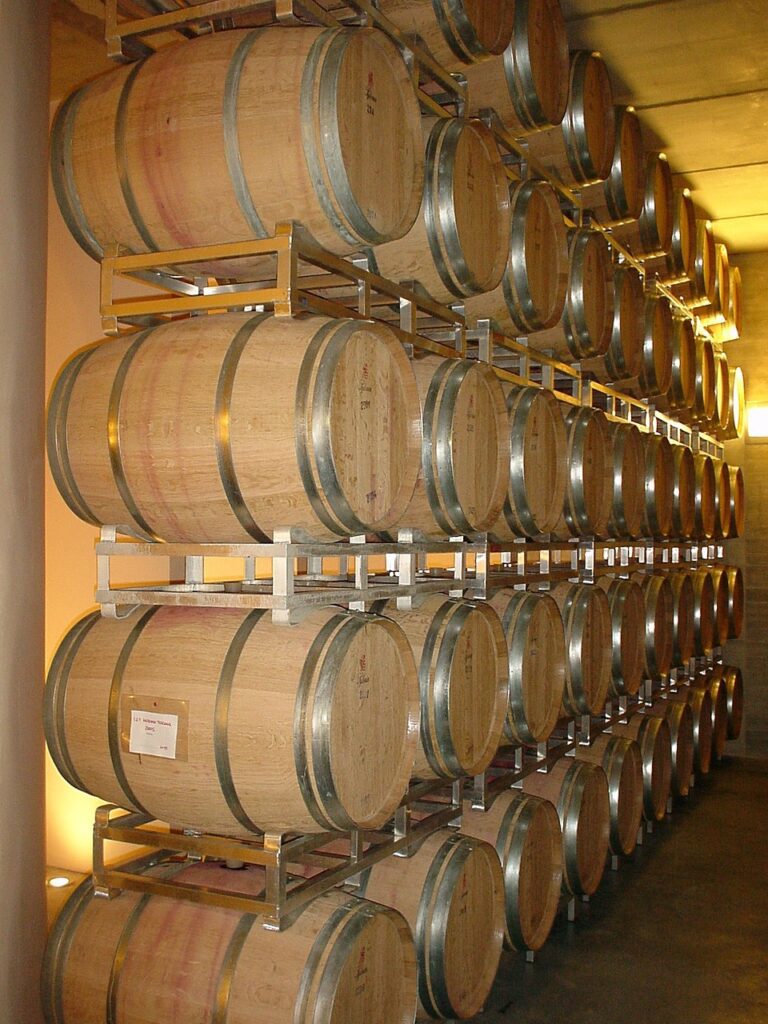
Skin fermentation has a great influence on the phenol concentration of wine.
Winemakers are increasingly using phenol data of the vineyard and cellar to manage the colour and tannins in order to improve the general quality of their wines. By means of analyses and consultation more data becomes available.
Phenols are chemical compounds, which are associated with phenol groups, consisting of six carbon benzene rings. Phenols are very reactive and can inter alia bind to proteins or other phenols.
Grape phenols can be divided into non-flavonoids, which occur mainly in the pulp and flavonoids, which occur mainly in the seeds, but also to lesser extent in the skins and stems (flavanols) or mainly in the skins and stems (flavonols). Anthocyanins, which are responsible for the red colour of red grapes and also occur in the skins, are also a flavonoid. Five different anthocyanin compounds occur in red grapes, of which malvidin is the most dominant one. Both the skin tannins and anthocyanin concentrations increase after veraison of the grapes, until a stage which is known as optimal phenolic ripeness. After that the concentrations commence to decrease. The phenol concentrations can be influenced by different factors, like berry size, seed size, number of seeds and skin-pulp ratio.
Phenolic analyses are mainly used for red wine making. It can however also be used for Chardonnay to differentiate between the different press fractions and sites. Phenol concentrations can however not be interpreted directly like acid or sugar concentrations, seeing that different assays are used and cultivar and origin differences will also occur. Phenol concentrations can be determined at different stages, but the most general are at veraison, a fortnight and one week before harvest, at harvest and at different stages of production, like alcoholic fermentation and rackings. Analyses that are executed after alcoholic fermentation can inter alia be used for compiling blends, oxygen management, determining sulphur dioxide levels and the use of wood.
Optimal colour in red wines can be obtained by understanding certain vineyard conditions, like light, nitrogen deficiencies, cultivar and co-pigmentation, better. Light exposure promotes colour formation, while higher temperatures above 36,5°C cause colour degradation. Innovative practices, like the orientation of the vine row, are consequently required where light exposure is obtained without direct sunlight. Regulated nitrogen deficiency promotes colour formation even if the same berry mass, sugar and acid concentrations are maintained. It happens because surplus nitrogen in the berries suppresses the phenolic pathway for colour formation. The nitrogen concentration in berries also correlates with the yeast assimilable nitrogen (YAN) of the resulting grape juice.
Cultivar differences regarding phenols are a complex interaction between anthocyanins and total polyphenols, which is not yet understood clearly. Co-pigmentation is responsible for the shift between red and violet colour nuances and can also increase the colour intensity, colour stability and colour extractability or combinations thereof. Flavons are the most influential co-pigments and certain anthocyanins form co-pigments more readily. Cultivars like Pinot noir and Sangiovese have low concentrations of flavons and the mentioned anthocyanins, which consequently limit co-pigmentation and cause that both cultivars have little colour. Phenolic analyses of grapes can include free and total anthocyanins (as colour indicator), bound anthocyanins (as indicator of mouthfeel and colour stability), total tannins (as indicator of structure) and total polyphenols. It can inter alia be used to monitor the ripening process or compare vineyard blocks. These data also influence cellar decision making, like the stage of harvesting, tannin additions, fermentation temperature, rackings, press fractions and extended skin contact. The bound anthocyanin-tannin ratio can be used as a quality indicator and 20% can be set as aim for Cabernet Sauvignon with a bound anthocyanin concentration of 200 mg/L and a tannin concentration of 1 000 mg/L (Rieger, 2019).
Phenol analyses of grapes and wine can be a handy tool prior to and during winemaking, but are rather used to observe trends, instead of interpreting absolute values.

Chemical structure of phenols.
Reference
Rieger, T., 2019. Managing phenolics in the vineyard and winery. Wine Business Monthly, April 2019: 44 – 51.













